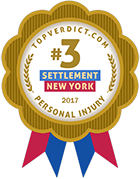Ready to Fight for You
Determining Fault After An Accident
A fundamental step after an accident is determining the at-fault party because typically, the at-fault party is responsible for paying resulting damages. When a driver fails to follow traffic laws, determining negligence is straightforward. But in other accidents, fault is not as clear. Further complicating matters is that multiple entities may decide on who was a fault, including the law enforcement officer called to the scene, an insurance adjuster reviewing the damaged property or a judge awarding damages.
If you suffered an injury from an accident and have concerns about your level of fault, seek guidance from an attorney at The Law Offices of Mark E. Weinberger P.C.
Reviewing The Evidence
To determine fault after an accident, law enforcement, insurance companies and the courts rely on evidence from the crash.
Factors include:
- Driver statements
- Police reports
- Vehicle damage, including impact points
- Photos from the scene
- Witness statements
- Weather and road conditions
- Medical records
Recovering Outside The No-Fault System
New York is a no-fault car insurance state meaning drivers must first pursue compensation from their own insurer for medical expenses and property damage no matter who was at fault for the accident. Only if your injury meets certain New York criterion you can step outside the no-fault system and pursue a claim against the at-fault party.
Comparative Negligence And Compensation
When pursuing a personal injury claim outside the no-fault system, New York uses the comparative negligence law for determining fault. Under the comparative negligence law, if you suffer an injury resulting from the accident, you can recover an amount based on your proportionate level of fault. If you are not at fault, you can recover full damages.
To learn more about your recovery options and fault liability, please call 516-855-3715 or email us to schedule a free consultation with a lawyer. From our conveniently located Rockville Centre office, we serve clients in Nassau County, Suffolk County and the five boroughs.
How Can We Help You?
Fields marked with an * are required
"*" indicates required fields




